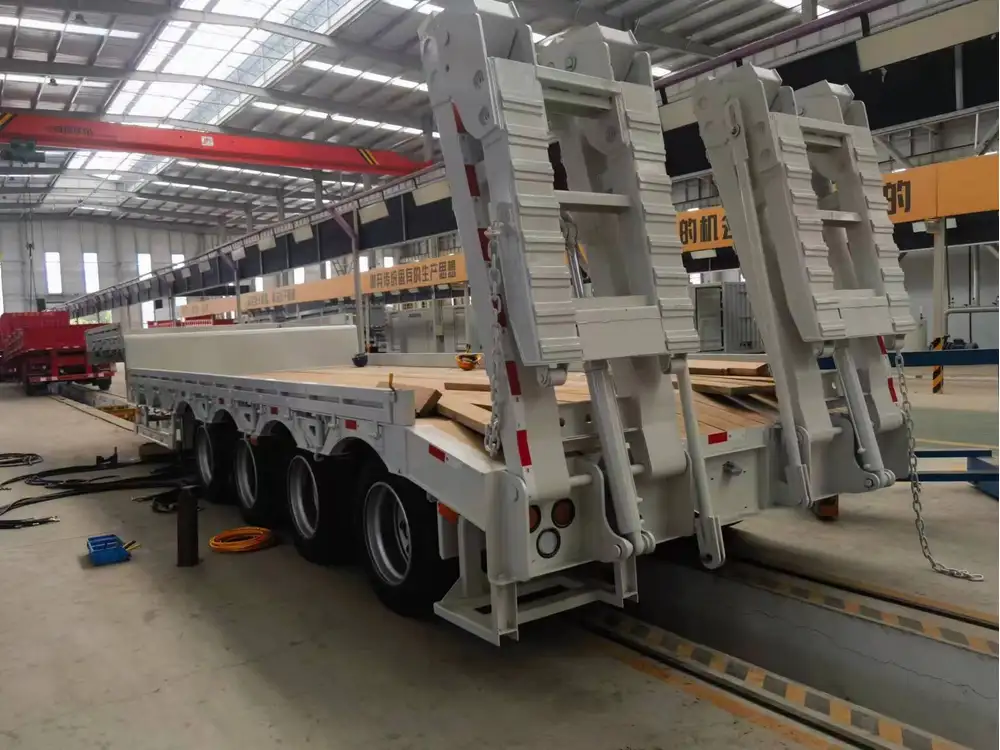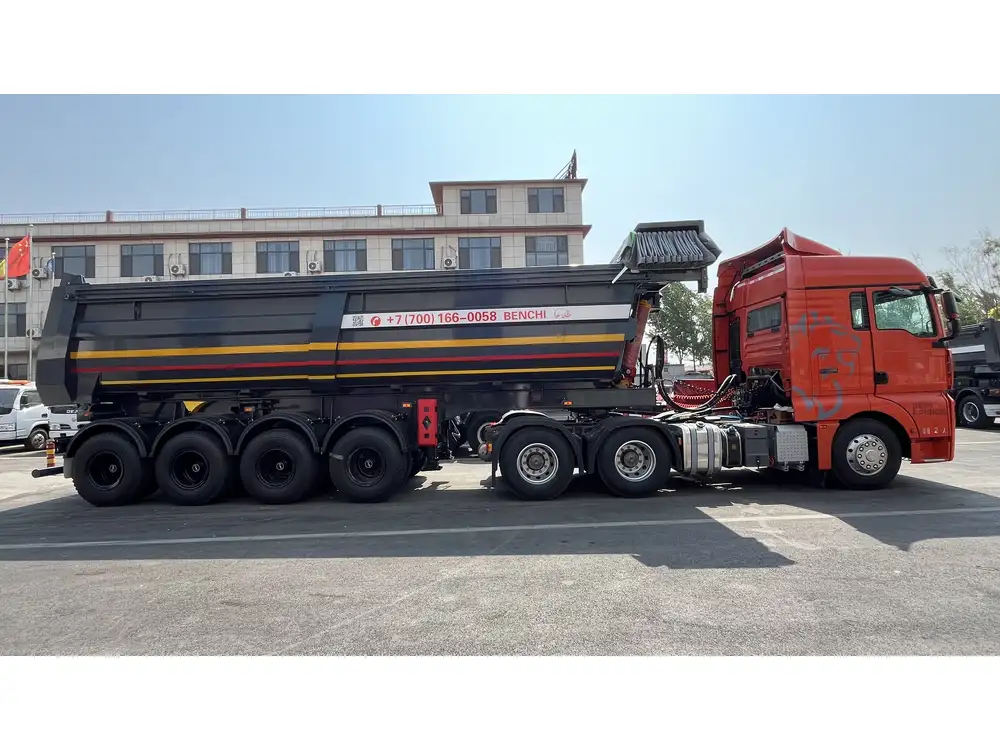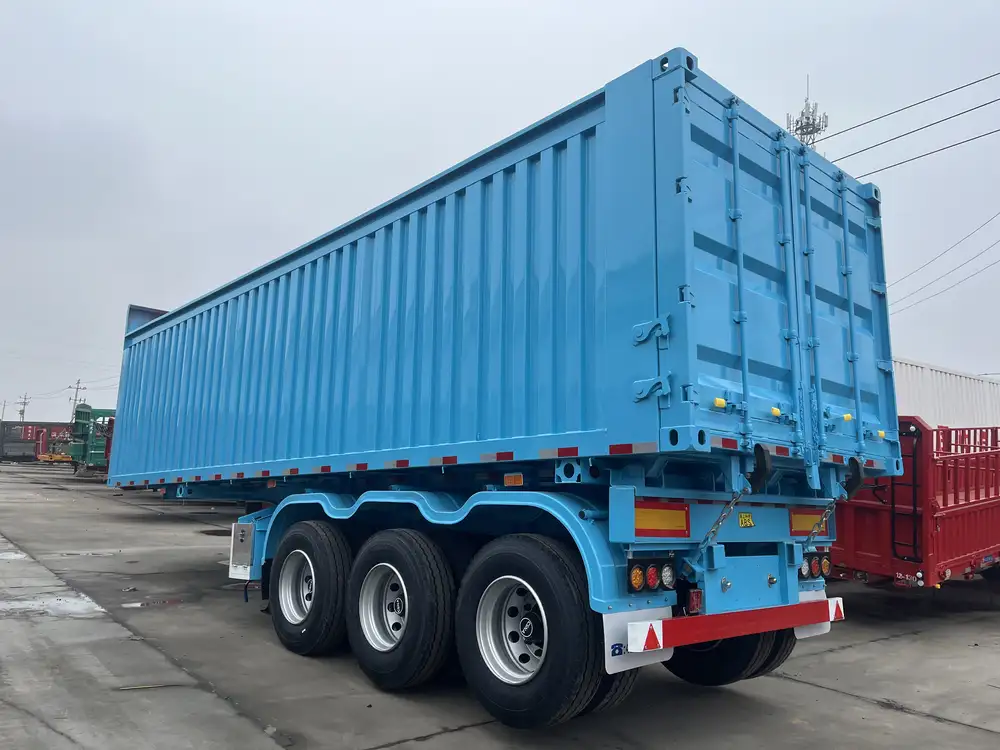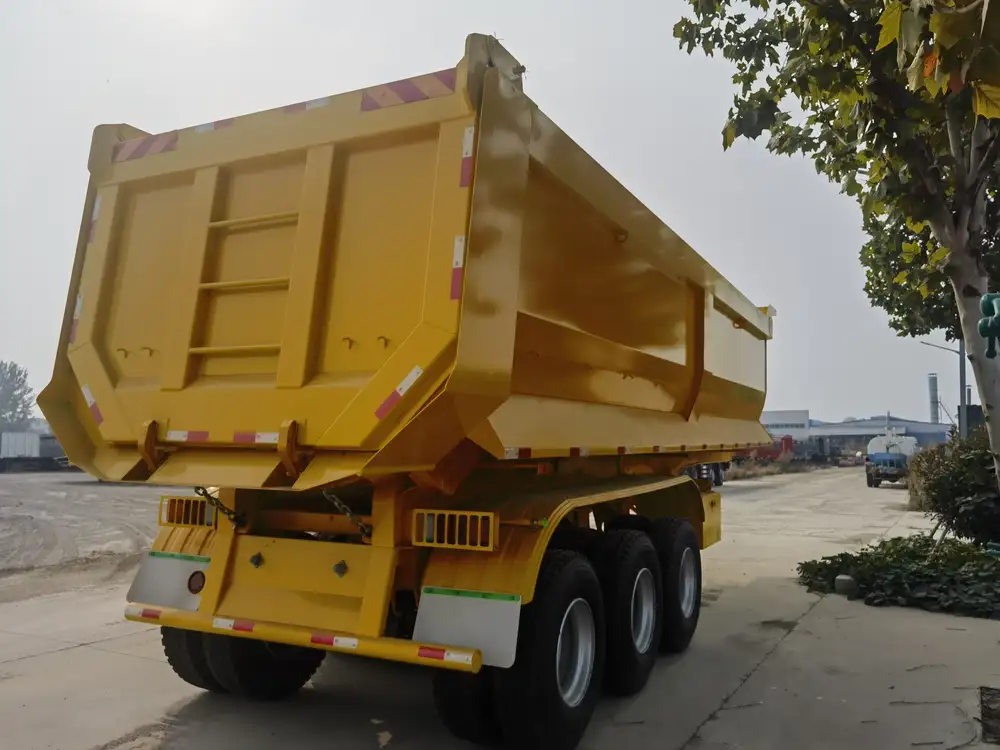The Importance of a Properly Sized Semi-Trailer for Soybean Transport
In the vast agricultural landscape, precise logistics determine profitability and efficiency. For soybean farmers and distributors, understanding the capacity of their transport vehicles is paramount. Semi-trailers serve as the backbone of agricultural logistics, facilitating the movement of crops from farms to markets, processing facilities, and storage. The intricate balance between load size, weight restrictions, and vehicle capacity is critical. In this article, we delve into the specifics of semi-trailer dimensions, soybean volume calculations, and essential considerations for transport efficiency.
Defining Semi-Trailer Specifications
Semi-trailers come in various sizes and configurations, tailored to different cargo requirements. However, the most commonly used semi-trailer for agricultural transport is the standard 53-foot trailer. Here are the key dimensions and specifications to consider:
| Specification | Details |
|---|---|
| Length | 53 feet (approximately 16.15 meters) |
| Width | 8.5 feet (approximately 2.59 meters) |
| Height | 13.5 feet (approximately 4.1 meters) |
| Load Capacity | Up to 45,000 lbs (20,412 kg) |
| Volume Capacity | Approximately 3,800 cubic feet |
| Usable Cargo Space | Varies based on loading method |
Understanding these dimensions provides a foundation for calculating how many bushels of soybeans can be transported in a semi-trailer.

Calculating Volume: The Cubic Feet to Bushels Equation
To convert trailer volume to bushels of soybeans, one must first comprehend that:
- 1 bushel of soybeans weighs approximately 60 pounds.
- 1 cubic foot of soybeans weighs approximately 48 pounds.
Using these figures, we can determine how many bushels of soybeans a standard 53-foot semi-trailer can hold.
Step-by-Step Calculation:
Calculate the Total Cargo Volume in Cubic Inches & Convert to Cubic Feet:
- The total volume of a semi-trailer is approximately 3,800 cubic feet.
Determine the Weight Capacity:
- Most semi-trailers can carry up to 45,000 pounds.
Calculate Bushel Capacity Based on Weight:
- Divide the total weight capacity by the weight of one bushel: [ \text{Bushel Capacity (weight)} = \frac{45,000 \text{ lbs}}{60 \text{ lbs/bushel}} = 750 \text{ bushels} ]
Calculate Bushel Capacity Based on Volume:
- Determine how many cubic feet are required for 1 bushel of soybeans: [ \text{Cubic feet per bushel} = \frac{60 \text{ lbs}}{48 \text{ lbs/cubic foot}} = 1.25 \text{ cubic feet/bushel} ]
- Thus, the volume capacity in bushels: [ \text{Bushel Capacity (volume)} = \frac{3,800 \text{ cubic feet}}{1.25 \text{ cubic feet/bushel}} = 3,040 \text{ bushels} ]
Conclusion of Capacity Calculations:
After these calculations, we find two critical results:
- Weight Capacity: 750 bushels based on weight restrictions.
- Volume Capacity: 3,040 bushels based on the physical volume of the trailer.
The limiting factor here is the weight capacity; therefore, when fully loaded, a standard semi-trailer can transport approximately 750 bushels of soybeans.

Factors Influencing Semi-Trailer Efficiency
While the above calculations provide a theoretical maximum capacity, actual loading must consider various practical factors:
1. Weight Distribution:
- Uneven weight distribution can lead to safety hazards and increased wear on vehicle components. Properly distributing the load ensures stability and safety on the road.
2. Legal Weight Limits:
- Different regions have regulations regarding maximum allowable weights for vehicles on public roads. Staying within these limits is essential to avoid fines and penalties.

3. Loading Techniques:
- The method used for loading soybeans—whether using gravity wagons, augers, or conveyor belts—can influence how efficiently the trailer is filled, impacting total load capacity.
4. Environmental Conditions:
- Weather and road conditions can affect transport operations. For instance, during wet seasons, the weight of the soybeans combined with moisture content can add considerable weight, necessitating a reduction in load.
Enhancing Transportation Efficiency
Transporting soybeans efficiently is not just about knowing how much fits in a trailer; it involves a holistic approach to logistics and supply chain management. Here are strategies to enhance transportation efficiency:

Utilizing Advanced Tracking Systems
Implementing GPS and telematics systems allows for real-time tracking of vehicles, optimizing routes, and managing delivery schedules effectively. This technology reduces downtime and maximizes productivity.
Prioritizing Maintenance Routines
A well-maintained vehicle is key to reliable transportation. Scheduled inspections, tire checks, and preventive maintenance can help avoid costly breakdowns.
Implementing Load Optimization Software
Advanced load management software can help operators calculate optimal loading strategies based on current conditions, thereby improving load management efficiencies.

The Economic Aspect: Calculating Transport Costs
Moving soybeans effectively is also about understanding and controlling costs associated with transportation. Consider the following breakdown:
| Cost Consideration | Details |
|---|---|
| Fuel Costs | Average fuel consumption (mpg), current prices. |
| Labor Costs | Driver wages, training, and compliance costs. |
| Maintenance and Repair Costs | Scheduled vs. unscheduled maintenance expenses. |
| Legal and Compliance Fees | Licensing, permits, and fines. |
| Insurance Costs | Coverage for vehicles and cargo. |
Understanding these factors helps optimize your transport budget, enhancing the overall profitability of soybean distribution.
Conclusion: Strategic Planning for Soybean Transport
Understanding how many bushels of soybeans a semi-trailer can hold is a fundamental aspect of agricultural logistics. While we concluded that the typical semi-trailer can carry about 750 bushels based on weight restrictions, optimal management involves a multifaceted approach that includes strategic planning, technology integration, and a commitment to operational efficiency.
As the agricultural landscape continues to evolve—fueled by technological advancements and market demands—it remains imperative to stay informed and adaptable. By mastering the nuances of transport logistics, you can not only ensure efficient delivery but also maintain a competitive edge in the market.
FAQs: Addressing Common Concerns in Soybean Transportation

1. What are the typical dimensions of a semi-trailer?
Standard semi-trailers are generally around 53 feet long, 8.5 feet wide, and can reach a height of 13.5 feet. It’s important to verify dimensions with your specific trailer model.
2. How can I ensure I am within legal weight limits?
Regularly weigh your load at certified weigh stations, consider your trailer’s tare weight, and keep abreast of local transportation regulations.
3. What type of semi-trailer is best for transporting soybeans?
A standard dry van trailer is usually the best choice for soybean transport as it provides protection from the elements while maximizing cargo space.

4. What are the best practices for loading soybeans into a semi-trailer?
Ensure that the loading process is even to promote stability. Utilize appropriate equipment, and check the moisture content to comply with weight limits.
This comprehensive look into soybean transport dynamics illustrates the vital relationship between logistics and agricultural efficiency. By understanding how many bushels of soybeans fit in a semi-trailer and optimizing every step of the process, farmers and transport providers alike can drive success in a competitive marketplace.



